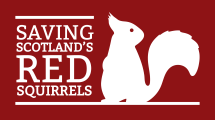…the situation with both red and grey squirrels is changing. The Great Scottish Squirrel Survey allows us to compare data between years which is really helpful in understanding the impact our efforts are having over time and where more help is needed.” “Acting as a squirrel spotter while you are out and about and reporting a squirrel sighting is simple… […]
Read More…
…to know more about how the situation has changed in the past year. Reporting a squirrel sighting is a simple thing anyone can do to help.” Grey squirrels were introduced to Scotland in Victorian times and have since replaced our native red squirrel in many parts of the country. They out-compete reds for food and living space and can also… […]
Read More…
…regional guidance listed below for advice on remaining survey equipment. We are incredibly grateful for the hard work and dedication that went into this year’s Spring Survey, and we hope that we can offer more opportunities in the future that you will find equally rewarding. There are all sorts of other ways you can get involved in the project, and… […]
Read More…
…of technical issues. However, you can also opt to present live if that’s what you’re more comfortable with. Q&As, workshops and panel discussions will be live. How do I record my presentation? If you are presenting alongside slides, the easiest thing is to record via PowerPoint. There is an option to record your slideshow, with your voiceover, then download as… […]
Read More…
…larger than red squirrels (they can reach almost double their size) and have small ears with no tufts. They can often present with red colouring, which is why it’s important to consider other characteristics when spotting greys. The most definitive way to tell them apart from reds is by their distinctive white fringes or ‘halos’ around their tails which are… […]
Read More…
…old) in assistance with set up and manning of the stall. Denholm Green Jubilee Event © Jan Ferguson Changes: Firstly, subject to approval at the next AGM, it has been proposed that the group change its identity and name. This is to consider areas not included in our original PARC where the residents feel unrepresented. Secondly, we hope to be… […]
Read More…
…snapshot of the situation on the ground. What makes the Great Scottish Squirrel Survey so great is that anyone can take part from anywhere in Scotland. Areas of known squirrel territory are equally important as those where few squirrels have been seen before. You can view all our previous sightings records here. Last year over 1300 people reported almost 2000… […]
Read More…
A non-native species is a species that has been introduced to an area where it doesn’t naturally occur. Most of these are harmless but some threaten native species. These are called invasive non-native species (INNS). INNS have been identified as one of the top causes of global biodiversity loss. In Scotland, one of the most prominent INNS is the grey… […]
Read More…
…Hub and necessary professional grey squirrel control in key areas. Join a Local Group Achievements to date Increase in grey squirrel control – Analysis of trapping results has shown an increase in grey squirrel detection, largely due to the increase in control activity across the region by volunteers and landowners, with volunteer cull contributions rising from 1.3% to 27%… […]
Read More…
…squirrels reintroduced and that we will carry out monitoring of the entire highland red squirrel population to know the current spread of the species. Why is it so important to carry out the work the project is undertaking? As habitat has been restored to the north-west coast following deforestation in the past centuries, it is important to restore the… […]
Read More…
